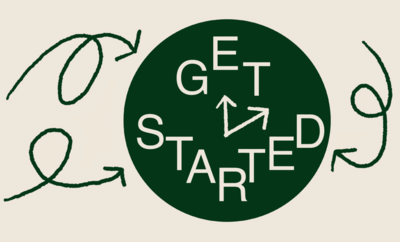It was mid-2020 and suddenly the term “skin hunger” was everywhere. Separated from friends and loved ones, even lifelong hug-haters came to crave the feeling of human touch. And, as usual, science has an explanation: “When you activate the neurons in the skin, the brain releases oxytocin,” says Dr. Victoria Abraira, assistant professor of sensory neurobiology at Rutgers University. “Eventually it makes you feel better.”
So whether you routinely meet people with an emphatic “I’m a hugger!” embrace or shrink at the idea of a post-pandemic handshake, as a human your body needs touch—and there are many ways to get it.
(Quick note: We’re using the platonic definition of “touch.” The health advantages of sex and masturbation deserve a whole other email, which we’ll probably write sometime soon!)

When you experience pleasurable touch, everything slows down—your heart rate, your voice, even your GI tract. Your body produces less of the stress hormone cortisol and more of the mood-boosting hormone serotonin and the “bonding hormone” oxytocin. Touch has also been found to boost the immune system and reduce physical pain.
But that’s only the beginning: Preliminary research on men with HIV and women with breast cancer found that massage increased the number of natural killer cells, the white blood cells that fight viral and cancer cells. Another study found that people who hugged more, and believed themselves to have closer bonds, developed less severe cold symptoms. “Ironically, when we’re in a viral pandemic, one of the very good things that could be happening to enhance our immune system to fight off the virus is touch,” says Dr. Tiffany Field, director of the Touch Research Institute at the University of Miami Miller School of Medicine.
Touch is also a powerful signal of social connection. Even a hand on the shoulder can remind us that we are not alone. “What really matters is being reminded that we belong,” says Michael Murphy, a research assistant professor at Texas Tech University who has studied hugging. “That there are people in our corner. A hug can do that."

All the pandemic puppy adopters were onto something: Having a pet is linked to lower blood pressure, less loneliness, and reduced anxiety, and a new small study of pet owners suggests it’s the touch that helps to comfort and relax us. Even petting your dog for a matter of minutes may raise the levels of oxytocin in you (and your dog!).
An animal snuggle may be the next best thing to a human one. “A cat rubbing on your leg, a dog licking your face, these other things can very well be surrogates because we establish the same social bonds with animals as with humans,” says Dr. Abraira. “This interaction with animals is basically hijacking the system that’s already there.” Of course, if you’re a pet owner, this science probably just proves what you already know.

Take matters into your own hands
Even your own touch can ease the nervous system into a state of relaxation, says Dr. Field: “The critical thing we’ve found is the pressure, moving the skin.”
Try giving yourself a solo back massage by lying on your back, lifting your knees to your chest and wrapping your arms around them, and slowly rocking back and forth. Or give yourself a neck massage by bringing both hands to the back of your head, palms facing forward, placing both thumbs at the base of your skull, and rubbing thumbs in a circular motion.
With a buddy
A hug can have a profoundly therapeutic effect on both a person’s physical and mental health. Here, according to research, is how to give the perfect one.
- Lean into the embrace (this isn’t science, just common sense—no one wants to hug a telephone pole).
- Apply medium pressure.
- Hold for as long as possible—research shows oxytocin rises at 20 seconds.
- Repeat as needed. Noted family psychotherapist Virginia Satir once said, “We need four hugs a day for survival. We need eight hugs a day for maintenance. We need twelve hugs a day for growth.”

READ
Learn the science behind our sense in Touch: The Science of the Hand, Heart and Mind by David J. Linden, a professor of neuroscience at Johns Hopkins University.
WATCH
No time to read? Tune in to Linden’s TEDx Talk.
LISTEN
This Hidden Brain episode explores the psychology of touch and its impact, especially on children.
GIVE
Austin Pets Alive! is a no-kill animal shelter in Austin, Texas, known for its pioneering lifesaving programs. (Disclosure: A Prism team member got her adorable pit bull here, so we might be a tiny bit biased.)

Wellness stories you won’t find anywhere else.

